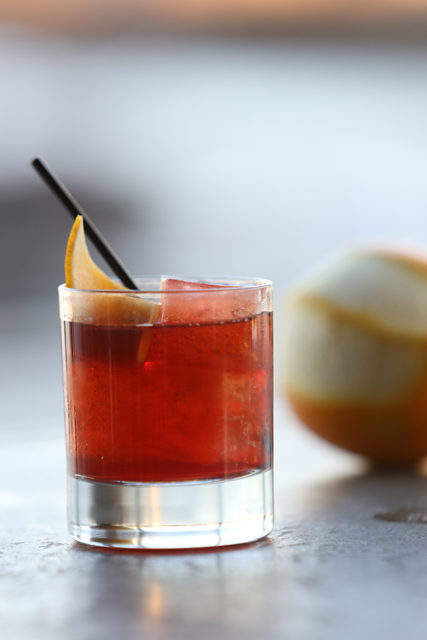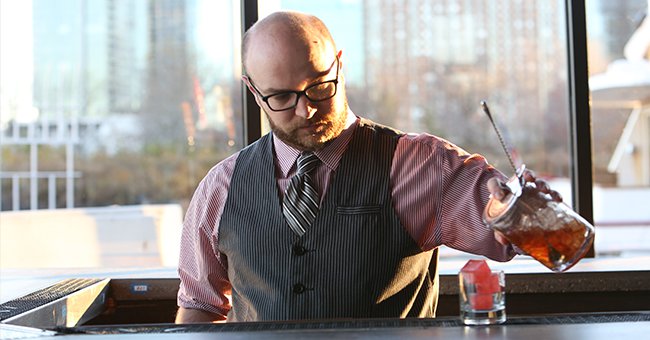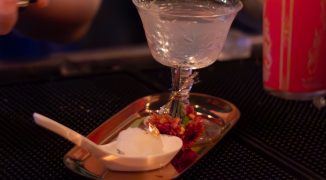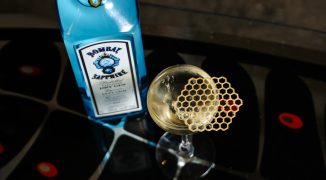Pastry chef-turned-bartender Ray Keane has a way of satisfying the most indecisive of cocktail drinkers.
He’s devised a way to make cocktails that transform into whole new drink, as the customer is drinking it. He can make a gimlet that becomes an Aviator, a Manhattan that transforms into a Boulevardier, and a Lemon Drop that changes into a John Daly.
The secret, he says, is in the ice cube.
He’s been testing out his transformational cocktails at Battello in Jersey City, N.J., but he’ll be formally debuting his drinks at The Kitchen Step, a neighborhood bistro that Battello owner Cory Checket and executive chef Ryan DePersio plan to open in January 2016, just a few blocks from Battello.
Keane says he first learned about flavored ice cubes when he worked at The Aviary in Chicago, which makes 35 different flavored ice cubes and has a dedicated ice chef. But, rather than just using an ice cube to flavor a drink, Keane wanted to use an ice cube to transform the drink.
“If your drink sits there and just gets watery,” he says, “why would you want to drink it except that you have paid for it? I’ve slugged down my share of watery drinks. A cocktail provides more value and more of an experience if you don’t dilute it with water, but with flavor.”
To make a Manhattan that transforms into a Boulevardier, Keane adds a Campari ice cube. To make a gimlet that turns into an Aviator, he adds one ice cube that is made with both maraschino liqueur and crème de violette. The melting of the ice cubes even makes the cocktail change in color from light green to purple. And, to change the Lemon Drop into a John Daly, Keane adds a tea-flavored ice cube.
 Not sure whether you’d like a Manhattan or a Boulevardier? Why not have one that becomes the other?
Not sure whether you’d like a Manhattan or a Boulevardier? Why not have one that becomes the other?
Two of the biggest challenges in making these drinks, he says, was figuring out the alcohol-to-water ratio, because alcohol doesn’t freeze, as well as encouraging impatient drinkers to give the ice cube enough time to melt before they finish their drink.
A single ice cube will have a quarter to half an ounce of alcohol, Keane says, so it needs a two-to-one ratio of water to freeze solid. One of his customers didn’t realize the ice cube wasn’t made of water and tried to eat it while enjoying their cocktail, and ended up spitting it out. “That’s a very boozy ice cube,” Keane says.
For the impatient drinker, Keane has experimented with ways to make the ice cube melt faster once it’s in the glass. “I’ve tried warming the glasses up a bit to expedite the process,” he says. “If you hold the glass, the heat from your hand can help melt it, too.” And, if you just let the cocktail sit on the bar, Keane says it will be three to four minutes before you notice a change in your drink.
As a former pastry chef, Keane says he likes to engage as many senses as possible when he is creating a cocktail. “I want the color and the smell to change,” he says. “If you make it interactive, then it is more a memorable experience than just having a drink.”
Keane is willing to admit that not every transformational cocktail he has tried to make has worked as he had hoped.
A plan to make a dirty martini with blue cheese ice cubes didn’t work out the way he had imagined. “It tasted like a locker room,” Keane admits. “I know what not to make now.”




